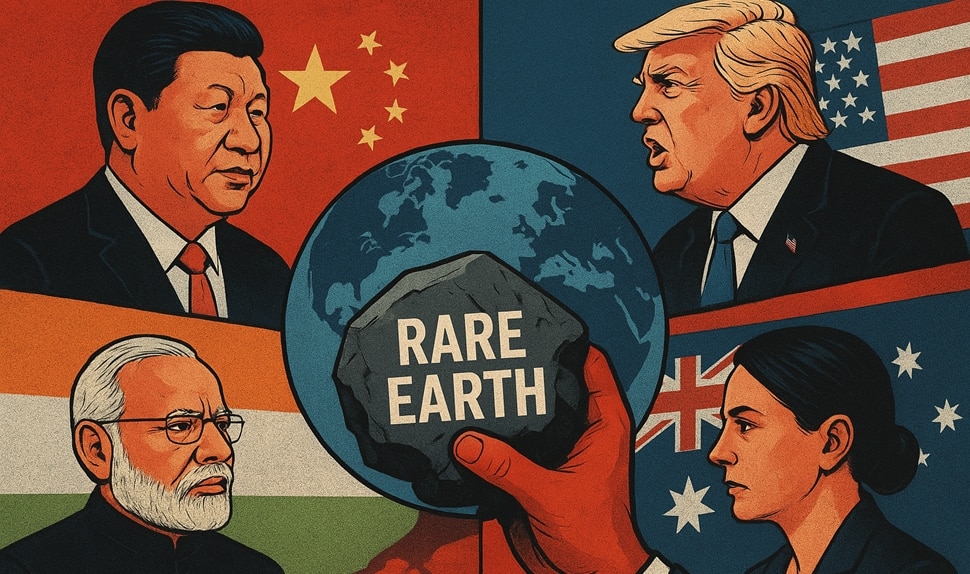China currently dominates the global rare earths market, processing nearly 90% of the world’s supply despite possessing just over a third of known reserves. This dominance is the result of decades of strategic, state-backed investment and a tight grip on the specialized processing technologies required to transform raw materials into the high-purity elements vital for modern technology. Rare earth elements—17 obscure minerals including neodymium, dysprosium, and terbium—are essential for a vast array of products, from smartphones and electric vehicles (EVs) to stealth jets and precision-guided missiles. China’s overwhelming control of this supply chain has become a critical strategic chokepoint, drawing global attention and concern.
Last week, China’s Ministry of Commerce underscored its continuing leverage by issuing “Announcement No. 62 of 2025,” imposing rigorous new restrictions on rare earth exports. This directive tightened export approvals for products containing even trace amounts of rare earths, effectively placing a bureaucratic lock on the global supply chain. The move sent immediate ripples across international markets: prices for neodymium-praseodymium oxide—a crucial ingredient for high-performance magnets—jumped nearly 12% within a week. Supply chain managers in the United States, Japan, and other countries hurried to evaluate potential disruptions. The message was clear for Washington, Canberra, and New Delhi: diversify sources or remain dependent on China’s control.
India, recognizing both the risks and opportunities posed by this rare earth challenge, is intensifying its efforts to become a significant player in the sector. The country holds approximately 7.23 million tonnes of rare earth oxide (REO) reserves, along with 13.15 million tonnes of monazite, a mineral important for thorium extraction used in nuclear energy. These resources are distributed along the coastal regions of Andhra Pradesh, Tamil Nadu, and Odisha. However, India’s potential remains largely untapped due to limited processing capacity.
Minister of State Jitendra Singh recently addressed Parliament, emphasizing that India is “pulling out all the stops” to deepen strategic partnerships with rare earth-rich countries. India has already secured agreements with Australia, Argentina, Zambia, Peru, Zimbabwe, Mozambique, and Malawi and is currently negotiating deals with Brazil and the Dominican Republic. Beyond resource acquisition, India is forging alliances with like-minded democracies to ensure supply chain resilience. A notable example is a new India-Japan pact focused on critical minerals. This partnership aims to build diversified, geopolitically insulated supply chains through joint exploration, technology sharing for sustainable mining, and ambitious plans for deep-sea mineral extraction—an emerging frontier with vast, untapped potential.
Meanwhile, across the Pacific, the United States and Australia are strengthening their collaboration on rare earths and critical minerals. Just days after China’s export curbs, then-President Donald Trump hosted Australian Prime Minister Anthony Albanese at the White House to sign a landmark Critical Minerals Agreement. Trump highlighted the longstanding efforts to develop rare earth and critical mineral supplies, expressing optimism about the near future: “In about a year from now, we’ll have so much critical mineral and rare earths that you won’t know what to do with them. They’ll be worth $2 billion.”
Australia holds the world’s third-largest rare earth reserves and has emerged as America’s most trusted partner in securing alternative, non-Chinese supplies. The bilateral deal aims to expand Australia’s production capacity and establish processing facilities in the United States. This ensures that minerals extracted from Australian soil can flow directly into American industries producing EVs, defense systems, and semiconductors, reducing reliance on Chinese processing.
The strategic importance of rare earths has elevated them to the status of a national security priority worldwide. From the defense corridors of Washington to India’s energy ministry, these elements are now seen as the backbone of technological and military advancement. Rare earths are indispensable for EV batteries, wind turbines, 5G networks, and precision-guided weaponry—technologies central to both the global green transition and modern warfare.
According to the International Energy Agency (IEA), demand for rare earths is expected to triple by 2035 as countries pursue net-zero carbon emissions. However, the production and processing of these minerals remain alarmingly concentrated, with China at the helm. This concentration has prompted governments worldwide to rethink trade policies, mining strategies, and diplomatic approaches. The situation draws stark parallels with the oil dynamics of the 20th century, when OPEC wielded outsized influence

